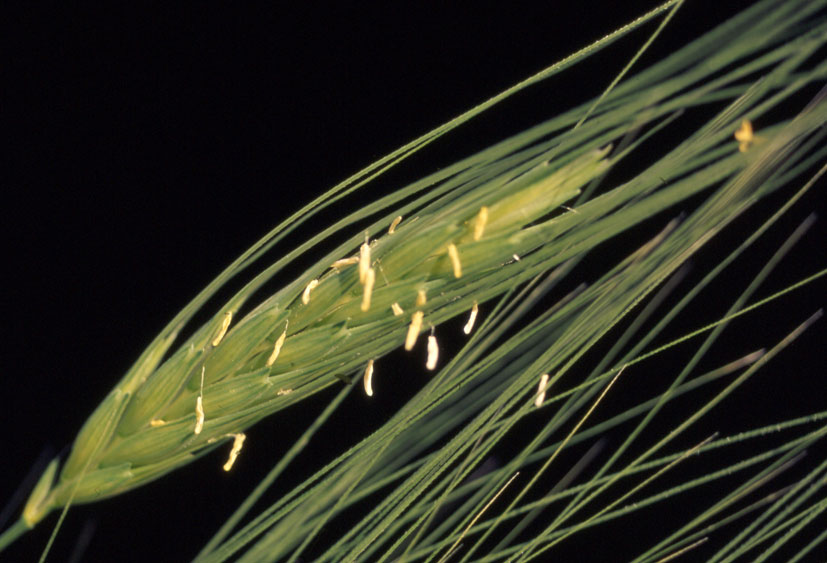Triticum araraticum: Red Data Book of Armenia

VU* B 1 ab (iii) + 2 ab (iii)
Category. Vulnerable species. It is considered close relative of the cultivated wheat species. In the republic one sub–population is known. The extent of occurrence is less than 5000 km2, the area of occupancy is less than 500 km2. Since the general area of distribution of the species is situated beyond the borders of Armenia the category of threat has been downgraded to VU. It was included in the first edition of the Red Data Book of Armenia under Category 1: Endangered species. It is not included in the Annexes of CITES and that of the Bern Convention.
Description. Annual plant with waxy film. Stems erect, 70–110 cm. Spike broad, distichous side 6–13 mm broad; rachis easily dividing into articules. Spikelets with 2 caryopses.
Distribution. In Armenia it occurs in Yerevan (neighborhood of Voghchaberd and Vedi villages) and Darelegis (neighborhood of Areni, Arpi and Aghavnadzor villages) floristic regions. EOO is 820 km2, AOO is 36 km2. Locations are 3. Besides Armenia the species grows in Azerbaidjan, Nakhichevan, Anatolia, Iraq and Iran.
Ecological, biological and phytocoenological peculiarities. Grows in middle mountain belt, at the altitudes of 1200–1600 meters above sea level, in the steppes, on dry stony slopes, in the fields, in the boundaries of the fields, along irrigation canals. Flowering in May, fruiting in June.
Limiting factors. Restricted extent of occurrence and area of occupancy, loss/degradation of habitats caused by the expansion of arable lands, amelioration and global climatic change.
Conservation actions. Part of the population grows in "Erebuni" State Reserve. Necessary: monitoring of the population state.
Suggestions
 The Ministry of Environment sent a letter international partners to draw their attention to the real danger of environmental disasters as a result of Azerbaijan's large-scale aggression towards the territory of Armenia
The Ministry of Environment sent a letter international partners to draw their attention to the real danger of environmental disasters as a result of Azerbaijan's large-scale aggression towards the territory of Armenia
 Vicia pisiformis: Red Data Book of Armenia
Vicia pisiformis: Red Data Book of Armenia
 Vavilovia formosa: Red Data Book of Armenia
Vavilovia formosa: Red Data Book of Armenia
 Trigonella capitata: Red Data Book of Armenia
Trigonella capitata: Red Data Book of Armenia
 Trigonella astroides: Red Data Book of Armenia
Trigonella astroides: Red Data Book of Armenia












